After taking over writing duties on Black Panther, for the better part of six months, he’s orchestrated one of Dr. Doom’s most ambitious attempts at world domination in Marvel’s DoomWar. He is the multi-award winning writer who is cool enough to rock a Kangol: Jonathan Maberry! Jonathan recently was able to give up some of his time to have a chat with ComicAttack.net about his current DoomWar story, new Marvel projects on the table, and some of his personal work!
COMIC ATTACK: Despite being a fairly new face to Marvel Comics, you are in no way new to writing. Can you tell us a bit about your background and some projects you worked on before your gigs with Marvel?
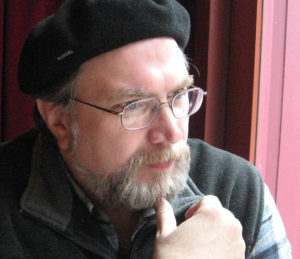
JONATHAN MABERRY: I’ve been writing professionally since college (which was back when dinosaurs ruled the earth!). I was a magazine guy first, and I sold over 1200 feature articles and a few thousand columns. Then I migrated into writing college textbooks while teaching at Temple University. I wrote the books for my own courses (Martial Arts History, Women’s Self-Defense, etc.) and for a few other courses (Judo, etc.). Then I took my books to the mainstream, first with martial arts books and then in a radically different direction by writing books about the myths, folklore and pop culture of vampires and other monsters.
Along the way I also sold song lyrics, two plays, greeting cards, and a lot of other stuff. If it had words on it, I probably tried it. Then in 2005 I took a swing at writing a novel. Never did that before and I had no idea if I was going to be any good at it, or if I could sell it. That novel was GHOST ROAD BLUES (Pinnacle, 2006), which became the first volume of the PINE DEEP TRILOGY, and it won the Bram Stoker Award for Best First Novel. I got an agent and she sold the trilogy to Pinnacle Books, and they published the rest of the series: DEAD MAN’S SONG and BAD MOON RISING. They’re big, sprawling horror novels that draw on the folklore I’d been researching.
Then I took another left turn and decided to write a mainstream thriller…but one in which the heroes encounter medically-created zombies. That was PATIENT ZERO, published in 2009 by St. Martins Griffin. The book has been a big hit and just went into sixth printing and is in development for TV. The second in that series, THE DRAGON FACTORY was released this year, and there are three more in the works.
I was tapped to adapt the script for the recent film THE WOLFMAN into a novel. I wrote it without having seen the flick, and the book hit stores a week before the film’s release. That was my first New York Times bestseller.
Next up is ROT & RUIN, a young adult novel set fourteen years after the zombie apocalypse. The book doesn’t come out until October but we already have film interest; and I’m days away from finishing the sequel, DUST & DECAY.
CA: Was it difficult going from writing novels, where you have more room to tell your story, to comic books, where you have to confine your ideas within 22 pages while collaborating with an artist?
JM: The thing about novels is you have lots and lots of room for dialogue, back-story and complex action set pieces. You don’t have that room in a 22-page comic, or even in a four or six-issue arc. Learning to write comics was a wonderful process for a couple of reasons. First, it helped me learn a minimalist style of storytelling, which is actually becoming a positive influence on my novels. Second, it taught me how to work as part of a creative team, which means trusting that the artist will do his or her part to tell a big chunk of the story through the visuals. As a result I can tell a complex story but I don’t have to rely on words for everything.
CA: Other than it being one of the coolest mediums to write in, what drew you to the horror genre, and who were some of your influences?
JM: I was partly raised by my grandmother who was deeply fascinated by what she called the ‘larger world’. When I was a little kid she was telling me folktales about revenants, church grims, Viking vampire-ghosts, kobolds, and other monsters. I got hooked on horror folklore and from there made the leap to literature and films, and of course comics.
I think the first horror comic I read with any regularity was Tomb of Dracula, and it’s pretty much my gold standard. I still think that’s the best horror comic ever.
I also got to meet some horror heavy hitters as a kid. Through friends of my middle school librarian, at age 13 I got to meet Ray Bradbury, Richard Matheson, Harlan Ellison, Sprague de Camp, and writers of that caliber. I still have the signed books they gave me, and I remember every word of writing advice they gave me.
Matheson is probably my greatest influence because he took the most time to talk to me about research, thinking outside the box, and he advised me to ‘never let them hang a label on you’ in terms of what I wrote. I’ve kept to that.
CA: Were you into comics as a kid? If so, what characters were your favorites?
JM: I fell in love with comics with the Fantastic Four. Issue #66 was the first comic I ever bought. I was hooked right away. I became addicted to that magazine, and to Thor, Captain America, Doctor Strange, Sgt Fury and the Howling Commandos, S.H.I.E.L.D., Tomb of Dracula, and the others in the late 1960s and early 70s.
The line-up of my ‘favorite’ characters has changed, but the characters I think about most are Captain America, SHIELD, Adam Warlock, Thor, Black Panther, the FF, Silver Surfer, the Punisher, Shang-Chi, the X-Men…wait, this list could take all day.
I collected comics from 1966 through the early 1990s, then career demands made me step back. I picked up a few over the years (The Walking Dead, Preacher, Hellboy, a few others), and then jumped back into Marvel whole-hog in 2008. Good thing they’re putting them out in trade paperbacks and Marvel Digital Comics, otherwise I’d never have gotten caught up.
CA: You took over writing Black Panther in the middle of the series after Reggie Hudlin departed. Was this a title you actively sought out to write for, or was it more of a “right place, right time” type of thing?
JM: I hadn’t asked for any regular writing assignments at the time. I was the new kid on the block. But I’ve always had a special place in my heart for the Black Panther. I learned about apartheid from a BP appearance in FF #119 when I was a kid, and T’Challa was one of my role models.
So, when Axel Alonso asked me to jump in, I didn’t hesitate.
CA: When you started on Black Panther, was DoomWar already on the table, or was it an idea of yours that evolved over time which Marvel later green lit?
JM: The name ‘DoomWar’ was on the table, but there was no storyline. I came in as Reggie Hudlin stepped back in order to work on the million other projects the guy has working, including the Black Panther animated show. Reggie had started several story threads but there wasn’t a clear resolution to them, so I gathered them up and spun the POWER arc (BP #7-12) and DoomWar.
Axel Alonso always wanted DoomWar to be a separate story, not a Black Panther tale but a Marvel Universe tale. When I pitched my storyline, he grabbed it and we were off and running.

CA: In the Marvel Universe, Wakanda was pretty much the unconquerable nation for years, and after the Wakandans repelled the Skrulls during the Secret Invasion, it was just icing on the cake. Now Dr. Doom comes in and does the unthinkable to the nation in DoomWar; why him and why now?
JM: Marvel has always taken risks, and they made their mark by having characters and situations with real world ties. I used Wakanda to tell a story about what’s going on in the world. The US is the most powerful nation on earth and yet we did not clearly win in Vietnam, we’re not yet winning in the Middle East, and bad people from within our own borders bent the economy over a barrel. Sometimes our own arrogance and tendency to assume that we’ll always be unconquered is our greatest weakness. Ditto with Wakanda.
But I didn’t write the story to slam the nation. Rather the reverse, DoomWar is about the nature of honor -what is it really? The end of DoomWar #6 makes a pretty clear statement about how much respect I have for T’Challa, Shuri and Wakanda.
I also explore this theme a bit more in “Honor”, a short Black Panther story in HEROIC AGE #4.
CA: In DoomWar, your interpretation of Dr. Doom has him move past the usual petty bad guy themes, as he’s actually trying to save the world in his own twisted way. Was this how you’ve always seen Doom, or was this just a natural progression of the character for this particular story?
JM: Well, I don’t believe either in absolute good or absolute evil. I mean…really, why does someone want to conquer the world? Unless he’s enormously short-sighted he must have thought about why he’s doing it and what he plans to do with it once he’s conquered it.
Other writers have explored Doom’s nobility (Lee and Kirby created a magnificent character with Doom!), so I took that another step and peeked inside to see what drives him to keep trying, even after all of the painful defeats. Mind you, his ‘better’ motivations are also filtered through the ego of a megalomaniac, so we’re not talking about perfect clarity of vision. We are, however, talking about purity of intent. He truly believes he’s the cure for what ails the world. The Doctor is in.
CA: After finishing Black Panther 7-12, and now that DoomWar is wrapping up, would there be any chance that you and Scot Eaton would come back for a Black Panther ongoing series?
JM: I’d give a lot to work with Scot on any project. He absolutely GETS my style of writing, especially for science fiction storylines and big-ticket super-heroics like we have in DoomWar. He also draws the best Doom I’ve ever seen.
I have a few pitches into Marvel for post-DoomWar stuff that might be a good fit for Scot and me. We’ll see what happens.
CA: I hear that you’ll be revisiting The Punisher in a new project from Marvel pretty soon. What can you tell us about Marvel Universe vs. The Punisher?
JM: Marvel Universe vs. The Punisher was kind of a dream project and my editor, Axel Alonso, pretty much grabbed it on the pitch, which was: “Punisher –last gun on earth.”
Folks who haven’t read it keep wondering if it’s another Marvel Zombies book, but it’s nowhere near that. No zombies at all. It’s a dark, moody, existentialist book. Very violent, but with humanity, humor and even some heart.
It’s a ‘possible future’ of Marvel rather than a ‘what if?’ story. And there is room for more stories to tell in this bleak and dangerous world.
Everyone at Marvel seems to think that this will have a lot of appeal, even to folks who aren’t necessarily Punisher fans. It might even inspire them to reconsider the character and his complexities.
CA: With such a huge selection to choose from, are there any other characters you would like to get your hands on in the Marvel Universe at some point in your career?
JM: All of ‘em. Since I was a kid I wanted to write the Fantastic Four and explore some of the cosmos-spanning adventures. But I have ideas for just about every Marvel Character, and if my evil master plan goes well eventually I’ll have a chance.
In the short term, I’m doing the Captain America: Hail Hydra storyline, and Cap’s been one of the characters I’ve always loved. Other favorites of mine include The Punisher, Shang-Chi, Thor, Deadpool, and Adam Warlock.
CA: Which of your novels do you think would make for the best comic adaptation?
JM: The Joe Ledger series, which is in development for TV, would definitely work as a comic. Think of it as X-Files/Fringe meets 24.
But I’d like to see ROT & RUIN transition into comics. It has a lot of action and a stark dystopian format.
CA: Any other projects in the works you’d like to tease us about?

JM: Well, I have two Marvel Events coming up. BLACK PANTHER: KLAWS OF THE PANTHER hits in October, and in that I get a chance to crawl inside the head of the new Panther, Shuri, and explore her complex emotions and psychology. It’s not easy being the person who puts on the Panther’s mantle after T’Challa’s worn it for so many years. He’s a hard act to follow. Plus, Shuri is a hot-headed screw-up and she doesn’t want to be, so we’ll be seeing her try to get her emotions under control so that she can ‘deserve’ the role she’s playing.
The other big news is CAPTAIN AMERICA: HAIL HYDRA. I’m enormously excited about this. It’s a 5-issue tale that starts in World War II as Cap and Bucky uncover a lab working to create a new kind of Nazi super soldier. Each subsequent issue jumps forward to a different point in Cap’s career as he collides with this same group. What he (and we) learn is that Hydra is a vastly old organization, and one arm of it has been working on the riddle of immortality since the days of Gilgamesh. Through flashbacks we’ll see the development of this aspect of Hydra. We have a different artist for each issue, too! Totally kick-ass.
And I have a new nonfiction book coming out August 31: WANTED UNDEAD OR ALIVE: Vampire Hunters and Other Kickass Enemies of Evil (Citadel Press; co-authored by Janice Gable Bashman). It explores the struggle between good and evil in myth, legend, literature, pop culture and the real world. There’s a chapter on good and evil in comics, and for that I interviewed Stan Lee, Mike Mignola, Fred Van Lente, Jason Aaron and others.
CA: Whoa! Well, I’d like to thank you for making some time in your schedule for Comic Attack, and giving us a peek at what’s to come in the Marvel Universe, as well as your own personal projects. And for anyone interested in what else Jonathan has going on, I’d suggest you take a look here.
”Till next time Comic Attackers!
Infinite Speech
infinitespeech@comicattack.net


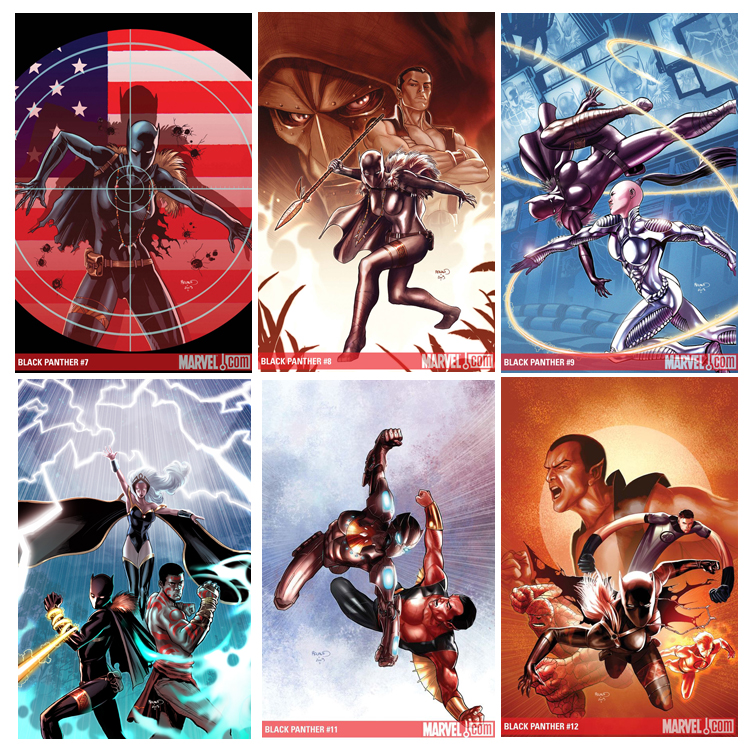
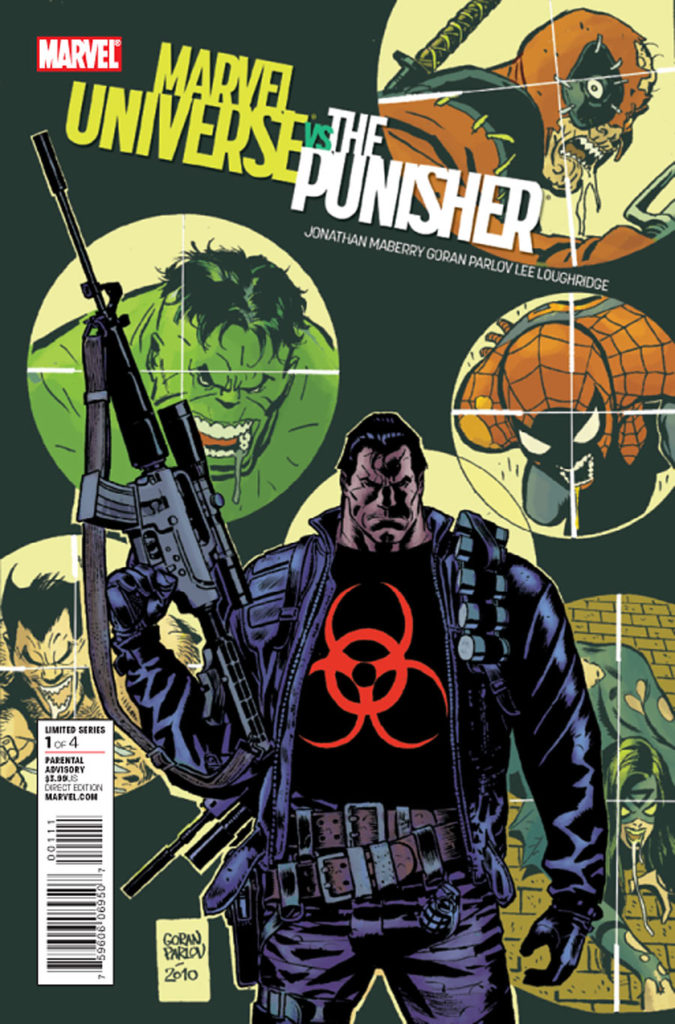

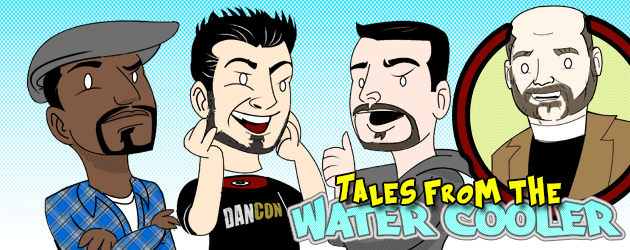
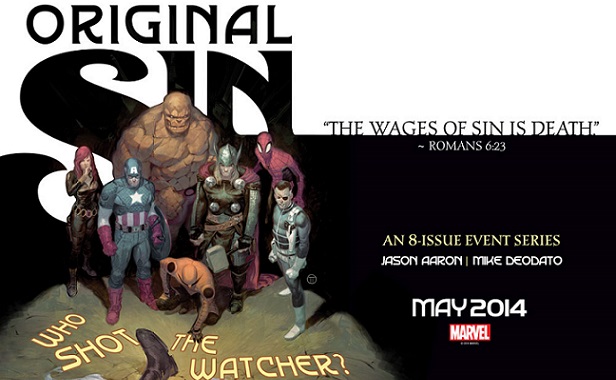
Pingback: Tweets that mention Jonathan Maberry: The Writer, The Fan, The Man! -- Topsy.com
Well, I’ll be damned, I am really out of the loop…I have worked with Jonathan, doing work for some of his books…and I didn’t even know he was working in comics! Way to go, J!
Sweet job, Speech! This article/interview was freakin’ awesome! It’s got me pumped for DoomWar (the trade needs to hurry up and come out, seriously!) and for jumping into the novels.
Cool beans! What a cool guy Maberry is!
Ok, the dude said Tomb of Dracula is the “gold standard”. Believe it people! DoomWar has been great and I can’t wait for the BP and Cap mini’s! Great job Speech.
The DoomWar trade comes out in October if I’m not mistaken guys and it’s a HARDCOVER!!
Pingback: The Uncanny X-Piles III
Pingback: Marvel Reviews: Marvel Universe vs. The Punisher #1
Pingback: David Liss Speaks on Black Panther: The Man Without Fear!
Pingback: Black Panther: The Man Without Fear or The Man Without a Title?
Pingback: Infinite Speech’s Top 10 of 2010!